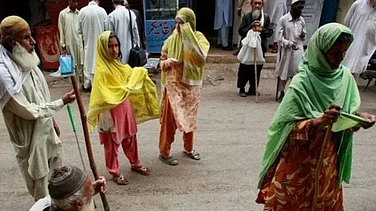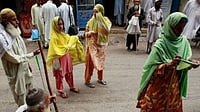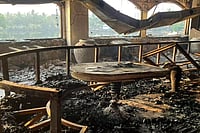Zambia is facing one of its most severe cholera outbreaks in recent history, marked by a death toll of over 300 people and more than 8,000 active cases since it was first reported in October last year. The situation escalated in mid-December, prompting health authorities to act immediately in an urgent attempt to contain the surge.
While Zambia has grappled with cholera outbreaks in the past, the current crisis stands out as the most alarming in recent years. Deficient water and sanitation infrastructure, coupled with inadequate hygiene practices have contributed to the spread of Cholera in this African nation. In addition, the start of Zambia’s rainy season characterised by flash floods has further fuelled the outbreak.
As of 11 January, the Ministry of Health reported 94 per cent of all confirmed cases and 97 per cent of all deaths in Zambia occurred in Lusaka Province, the capital of Zambia.
What is cholera?
The World Health Organization defines cholera as an acute diarrhoeal disease that can kill within hours if left untreated. The highly contagious illness is primarily transmitted through consuming contaminated food or water. While some individuals may carry the bacteria without showing symptoms, they can still shed it into the environment through faeces, posing a risk of infection to others. Severe cases can lead to acute watery diarrhoea, and immediate medical attention is crucial to prevent potentially fatal outcomes.
Why does Zambia see frequent cholera outbreaks?
In Zambia, inadequate water and sanitation infrastructure and poor hygiene practices, create an environment conducive to the rapid spread of the disease. The high population density, particularly in unplanned urban areas and refugee camps accommodating thousands from neighbouring nations, results in densely populated settlements with pressing demands for shelter, healthcare, and WASH facilities.
Moreover, Zambia grapples with frequent flash floods, which exacerbate the impacts of cholera. The inadequacy of drainage systems, particularly prone to flooding during the rainy season, adds to the challenges faced. These peri-urban areas also house highly mobile populations, amplifying the risk of the spread of communicable diseases.
This is not the first time Zambia has experienced a cholera outbreak. The country experienced its last major outbreak from October 2017 to June 2018 with a total of 5,935 reported cases and 114 deaths. There have been many more outbreaks in the past, however, the ongoing one stands out as the most severe in recent history.
Zambia’s response to the cholera outbreak
In response to the surge in cholera cases, the government has designated Lusaka’s National Heroes Stadium as a Cholera Centre as township health centres are now struggling to cope. Schools in Zambia will remain closed for an additional three weeks following the festive holidays, causing a delayed start to the academic year.
The Zambian president, Hakainde Hichilema, has urged people to move out of towns and back to rural areas as schools remain closed to prevent further spread. Hakainde Hichilema in a post on X, thanked China for its assistance to Zambia in various areas like providing medical experts, potable water, anti-cholera supplies and water purifying equipment.
The World Health Organization (WHO) is also to send about one million cholera vaccine doses in the coming days in a bid to contain the outbreak, according to the BBC.
WHO preliminary data on cholera cases around the world
In the past year, there was a significant increase in cholera cases, as indicated by preliminary data from the World Health Organization (WHO). Globally, there were 4,000 reported cholera-related deaths and 667,000 confirmed cases, surpassing the figures recorded in 2022.
The WHO has elevated the situation to a grade 3 emergency, which is its highest internal health emergency level, highlighting the seriousness of the global resurgence of cholera. Since January 1, 2023, at least 30 countries have reported cases of cholera.


















_.jpg?w=200&auto=format%2Ccompress&fit=max)






